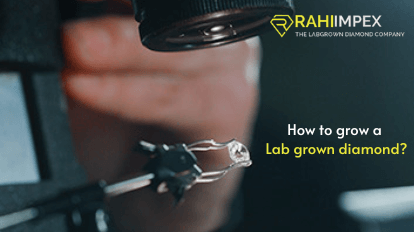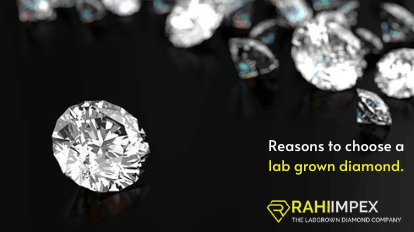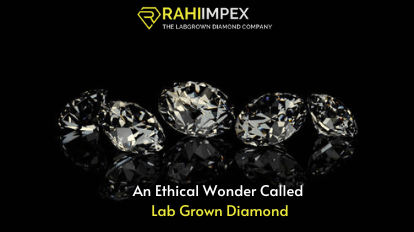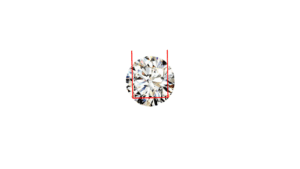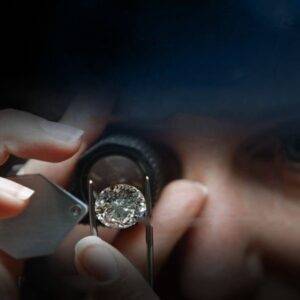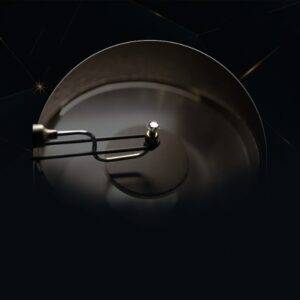Home »
What are Lab grown diamond?
Synthetic diamonds or lab-grown diamonds are gemstones made in laboratories in a strictly controlled environment. They are considered to be strong competitors of natural diamonds as they have the same physical and chemical properties and are also purer in composition. Although there are misconceptions regarding the credibility of these gems, their beauty, quality, and aura show how they are better than natural diamonds in every way. Today lab grown diamond manufacturers use different methods to create the various types of synthetic diamonds in terms of color, clarity, cut, and carat.
Does growing a lab grown diamond take years like natural diamonds?
Lab grown diamonds do not take years for their formation, rather they are made within a few weeks in laboratories. Developed from diamond seeds, these gems are pure and flawless with better texture when compared to polished natural stones. Since the conducive environment is created manually, the atmosphere needed for formation is achieved within a very short time, thereby making them convenient and easy to be produced.
Why were lab grown diamonds grown in the first place?
The process of synthetically producing diamonds was introduced to the world in the early 1900s. The need for diamonds during the time increased due to the industrial applications that natural diamonds had. When the world was going through a tough time and was devastated due to the effects of world war, the mining of diamonds began to be seriously affected. The decline in the supply of natural diamonds made scientists look for an alternative source.
A General Electric lab in Schenectady, New York became the center of experiments that eventually led to the birth of the first batch of lab grown diamonds in 1954. The group of experts on GE was relieved yet not satisfied. These diamonds were very small. They continued with the experiments trying to polish the method to figure out a much more commercially viable way of producing diamonds. Slowly along with the change in production, the size of the diamond also altered. Bigger ones suiting for jewelry were produced. Thus, today’s factory model of producing diamonds came into existence.
How are man-made diamonds grown?
Lab grown diamonds suppliers use two major methods to produce diamonds. These are HPHT and CVD.
The HPHT method
HPHT stands for High Pressure, High Temperature. The HPHT diamonds are products of a high pressured environment that is created using sophisticated equipment. This was the mechanism developed in the 1950s that produced the first lab grown diamonds. This technique paved way for the other method in the later years. HPHT diamonds are known for their clarity and purity.
The HPHT process is explained below:
Step 1: The best quality diamond seeds are selected by the lab experts first. These seeds form the basis of the diamond to be formed. Hence, they are picked only after scrutiny.
Step 2: The diamond seed is placed inside a small capsule that is equipped with high pressure generating apparatus.
Step 3: The seed is then exposed to high pressure of 1.5 million pounds per unit area and the temperature is set at 1500 degrees Celsius. This results in the carbon being placed inside the capsule to dissolve thereby creating a coating for the seed. The dissolved metal slowly covers the seed with multiple layers. The manufacturers see to it that the temperature and pressure do not go beyond a limit as it can lead to cracks in the diamond.
Step 4: The seed will be placed in the mentioned condition for a few weeks or months. The process is called crystallization. With time the coating increases the size of the seed leading to a raw rough stone.
Step 5: The rough stone when reaches its full form is taken out and subjected to polishing and grinding using machines and tools that are specially crafted to serve the purpose. The procedure needs to be done meticulously. The rough stone thus turns into a beautiful diamond ready to be sold as it is or can be used to adorn jewelry.
HPHT diamonds as they are made in different conditions come out in shapes different from natural diamonds. They have octahedral and cube faces with flat bases. The perfect HPHT diamonds are extremely beautiful and lustrous. Customers who look to buy HPHT diamonds often tend to find the best ones for jewelry purposes.
The CVD method
Similar to HPHT diamonds, CVD diamonds are quite popular in the market. They are one of the purest forms of synthetic gems. Called Low Pressure High Temperature or Chemical Disposition Vapor diamonds, these pretty sparkly stones are the favorites of lab grown diamond wholesalers. They are widely popular around the world especially the Indian Lab grown diamond suppliers who make a huge profit from these.
The CVD process although was developed after HPHT came as a method that is the alternative to it and not the better option.
This method takes the same time to create a diamond. The process is explained below:
Step 1: Like in HPHT, the perfect diamonds seeds are carefully picked from the lot. These seeds are shaped to be flat in nature.
Step 2: The flat diamond seeds plates are placed inside a chamber which is later filled with a carbon-containing gas mostly methane.
Step 3: The temperature inside the chamber is increased converting the gas into its plasma state.
Step 4: A source of energy, a microwave beam is made to pass through the high temperature plasma gas breaking its molecules and making them attract towards the seed plates.
Step 5: The seed plates are coated with the molecules resulting in crystallization. This goes on for weeks till the seed becomes a big rough stone.
Step 6: Once the process is complete the rough stones are taken out and polished to form the perfect synthetic diamond.
CVD diamonds tend to have a flat tabular shape due to the flat diamond seeds used. These gems often take a brownish color and display a greyish edge of graphite. The brown tinge to the diamond can be removed through heat treatment before it is crafted to suit jewelry purposes. To buy a CVD diamond one will have to check the color, clarity, cut and carat to know the quality.
Can lab grown diamonds be identified based on the way they are grown?
Lab grown diamond wholesalers and the clients that buy these stones need to be aware of the nature of the diamonds. As lab grown diamonds exhibit the same chemical and optical properties the texture and shine will be similar to their natural counterparts. Yet, they can be identified when they are in their raw form as rough stones. The shapes that are formed are one way to identify these gems from the natural diamonds.
Even when it is very hard to tell them apart from natural diamonds in their final form, with the right tools it is not impossible. Some of them are:
- UV Fluorescence Lamp
- Refractometer
- Polariscope
- Binocular Microscope
In addition to these, there is other equipment that is used for proper identification.
Lab grown diamond manufacturers will have a team of gemologists just to look into the characteristics of the diamond and analyze the quality. A clear idea of the same is necessary to successfully run a diamond manufacturing business.
Visual characteristics help gemologists identify the type of synthetic diamond.
Given below are some of such features that help the gem experts to identify the diamond type:
- Color distribution
- Kind of strain patterns
- Inscription on the girdle
- Metallic Inclusions
- Presence of phosphorescence
- Type of fluorescence colors
These are the major ways through which HPHT and CVD diamonds can be distinguished from each other and from natural diamonds. Both the types will have their own nature when it comes to each of the mentioned features. For example, in terms of fluorescence, HPHT diamonds tend to be intensive while the case is not so with CVD diamonds. Similarly, strain patterns are more and diverse in natural diamonds when compared to synthetic diamonds.
Not all features can be used all the time. It might be just a few among these that can be observed in each case.
Lab grown diamond wholesalers and exporters use these methods to create clarity in the terms of production and sale. They ought to have a clear idea as to which diamond is which as it is very easy to get confused between the different types.
As a synthetic diamond is grown using definite measurements and limits, the products are the perfect result with pre-determined characteristics. Cut, clarity, carat, color among other features are all fixed before the process. When a customer goes to buy CVD diamonds or HPHT diamonds, he can demand the lab grow diamond manufacturer the relevant details regarding the diamond to know the product thoroughly.
Lab grown suppliers and manufacturers grade their diamonds from prestigious diamond grading institutions like GIA, IGI, AGS, EGL, etc. These institutions study each diamond and give reports establishing the quality of the gem. Apprehensions of a buyer when he decided to buy HPHT diamonds or CVD diamond can to an extent be resolved if he can get to see the report and understand the details for himself. Most of the lab grown diamond wholesalers and retailers provide the report without the buyer asking for it.
Ongoing research on the methods to grow synthetic diamonds
Studies and research continue to happen in the diamond manufacturing field. With technologies, developing by the day, chances for innovations are immense. New diamonds with better quality and clarity can reach the market anytime. Novel and affordable machines will reduce the cost of production thereby reflecting the same in the market price.
